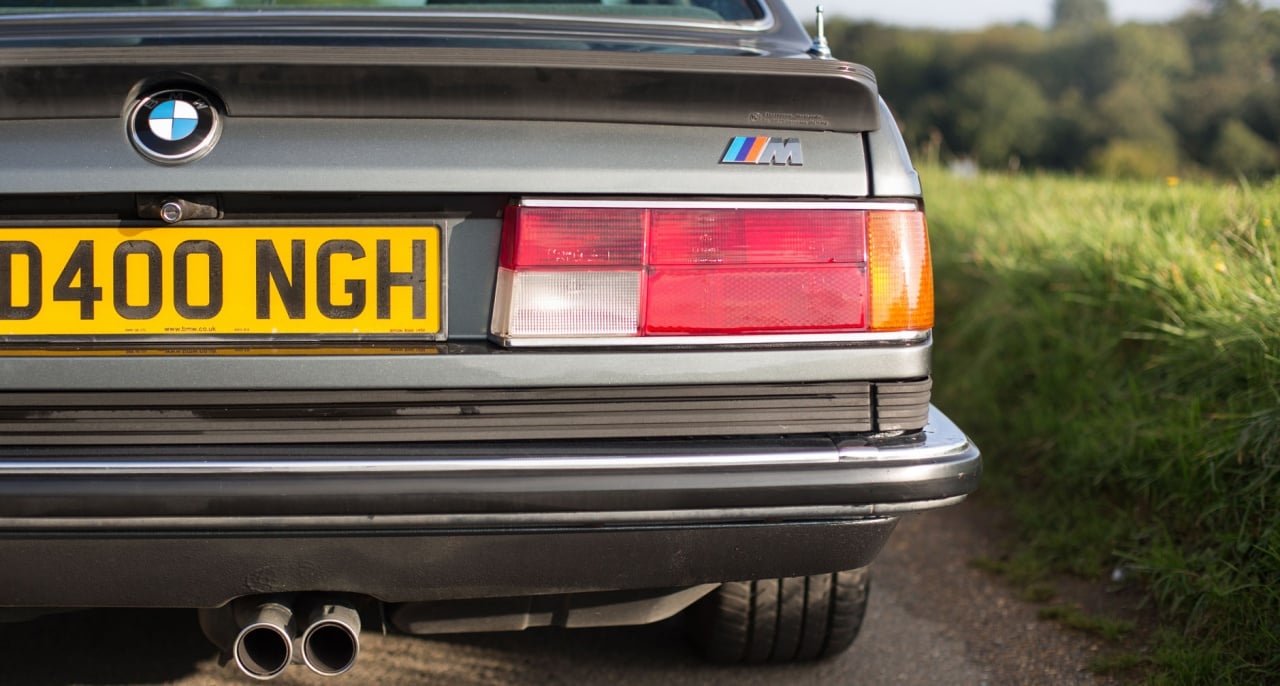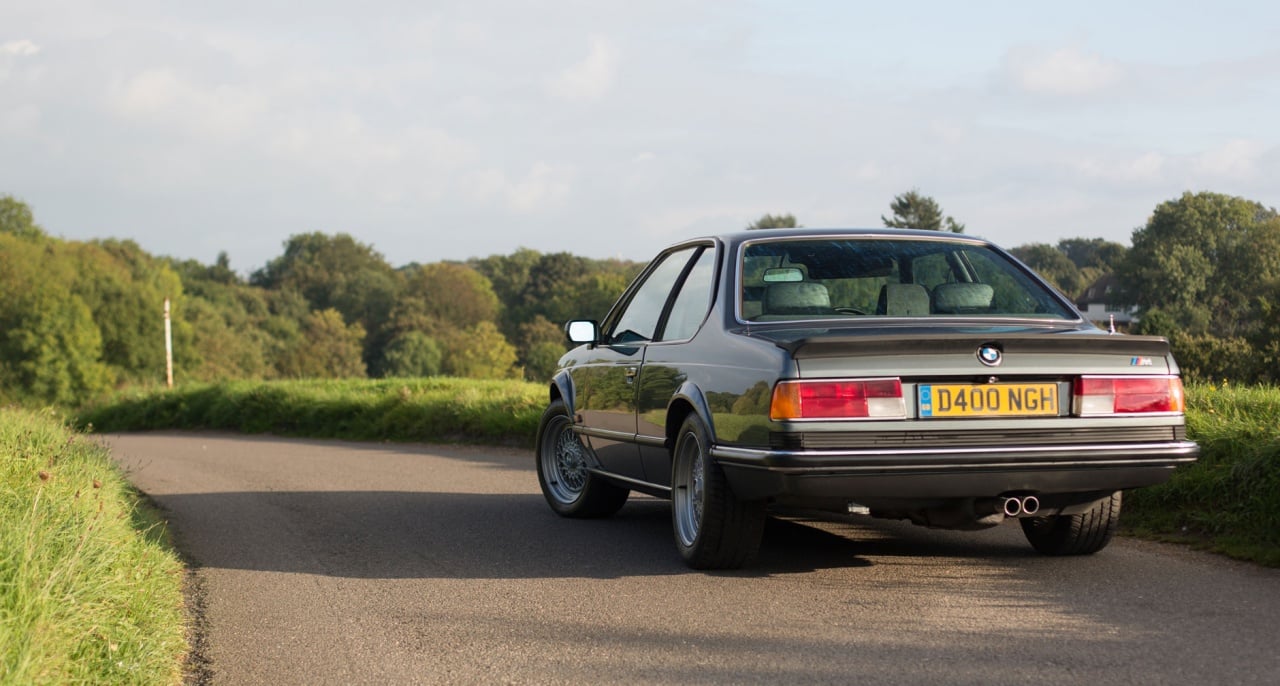Like the Golf GTI and 930 Turbo, the M635CSi represented the epitome of design and performance in the 1980s. Visually, its shark-nosed bonnet and rubber boot spoiler managed to exert an aggression modern cars would envy; yet it rode on 15-inch alloys and used the revered M badge sparingly both inside and out. It was assertive yet modest, even though it had no reason to be: beneath that never-ending bonnet sat a tweaked version of the M1 supercar’s straight-six – with significantly more power than the M535i which played intermediary.
A spine-chilling howl

Fire up the engine, and you have to admire BMW for remaining loyal to its beloved engine configuration while rivals were using anything up to hefty V12s, as in the Jaguar XJ-S. The 3.5-litre six initially voices itself with a deep-chested burble which rises to a howl once the throttle’s extensive travel is explored – all the while amplified by the curiously off-centre twin tailpipes. The pedals lie in (worryingly) close proximity to each other, yet this makes for a heel-and-toe artist’s dream while scything down through the five-speed gearbox, which is precise but might seem a little long-of-throw by today’s standards. However, modern machines can only dream of achieving the visibility and ride quality afforded by the spindly A-pillars and modest-diameter wheels respectively.
Feeding the fish

The 80s supercoupé is happiest when showing off its composure at speed, the shark’s mouth being fed with multiple miles. It’ll supposedly top out at 158mph if required – another reason to make its electronically governed descendants envious – but of course, real-world traffic means it needs to be just as adept at crawling along in a queue. Even in situations where the vast majority of its 286 horses are merely grazing, the straight-six happily burbles away; the only grumbling on board will be coming from the driver via his left foot, the weighty clutch (common to many cars of that era) taking its toll. Once on the open road with all the horses back at your disposal, that’ll soon be forgotten: with modern tyres, the six is a forgiving beast even in the wet, but remember you’re relying on a good old-fashioned locking differential in place of the successive generation’s traction control systems.
A lust for rust

Of course, there were still some niggles which BMW (and to be fair, most other manufacturers) hadn’t figured out in the mid-80s. Such as how to make the window to a frameless door meet its seal (be prepared for the occasional damp shoulder) or, more worryingly, a way of rustproofing that wasn’t simply ‘not driving it in the wet’. However, find a cared-for example and it’ll bring you the delights of genuine usability in an era-defining package. Just politely decline any offer of a Nokia to go with it.
Photos: Alex Penfold













